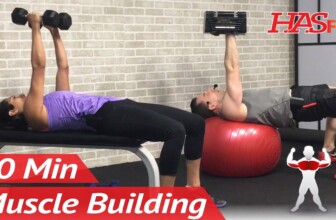Bone Health Update: Treating, Preventing Osteoporosis
Osteoporosis is increasingly being diagnosed in Americans over 50, fueled in large part by the millions of baby boomers reaching retirement age every year. But there are basic and effective steps individuals can take to prevent or treat this disease, which weakens bones and is a major cause of devastating falls among older adults.
The common components to effectively treating osteoporosis include a healthy diet, fall prevention counseling, addressing the patient's functional status, strengthening exercises and medication.
Want to see more?
Baptist Health South Florida’s Resource Blog https://baptisthealth.net/news
Like us on Facebook https://www.facebook.com/baptisthealthsf
Follow Baptist Health on Twitter https://www.twitter.com/baptisthealthsf
Follow Baptist Health on Instagram https://www.instagram.com/baptisthealthsf/
Follow Baptist Health on Pinterest https://www.pinterest.com/baptisthealthsf/
[Transcript]
[Osteoporosis: Prevention or Treatment]
Natalie Regalado, M.D.:
We want to make sure that anyone at risk or with osteoporosis is on a good diet with calcium and vitamin D. We know that vitamin D is good even without osteoporosis in the elderly, because it prevents falls, which is a huge thing for osteoporosis, so that's a diet component. Then there is a full prevention component, because if you fall and you have osteoporosis that's a set up for a fracture. And that could mean a home evaluation, working with family members, working with a patient to make sure that there are no hazards like carpets that patients can trip over and things like that. The next thing that needs to happen is, you know, work on the patient functional status, make sure that the patient is fit, can walk, if they need a cane or another assisted device that we provide that for them, again, to prevent falls. And then we go into exercise. And there's data to support weight lifting. It doesn't have to be a lot of weight. It can just be like lightweight, but some form of resistance to improve bone health.
[Doctor discussing the health of the bones in one’s body.]
[Listing of risk factors for Osteoprosis]
Natalie Regalado, M.D.:
And then lastly, there are medications. There are several risk factors that are known for osteoporosis, age, female gender, and then there's other things. If you're smoking and you're worried about osteoporosis or you have [inaudible 00:01:25] it's very important that you do not smoke. There is a whole number of diseases, for example rheumatoid arthritis, hemochromatosis, and the list goes on, and on, and on, that can put people at increased risk of osteoporosis. There are medications, like if you're taking prednisone or other steroids for anything, also increases the risk of osteoporosis. And then genetics also. If your mom or dad had a fracture, that is one of the biggest risk factors for you, yourself having a hip fracture.
[BaptistHealth.net/OsteoScan]
[Baptist Health Medical Plaza]
[End Transcript]
(ambient music) [Osteoporosis: Prevention or Treatment] [Natalie Regalado, M.D., Internal Medicine, Physician] – We want to make sure [Natalie Regalado, M.D.] that anyone at risk or with osteoporosis [Natalie Regalado, M.D.] is on a good diet with calcium and vitamin D. [Natalie Regalado, M.D.] We know that vitamin D is good [Natalie Regalado, M.D.] even without osteoporosis in the elderly [Natalie Regalado, M.D.] because it prevents falls, [Natalie Regalado, M.D.] which is a huge thing for osteoporosis. [Natalie Regalado, M.D.] So that's a diet component. [Natalie Regalado, M.D.] Then there is a fall prevention component [Natalie Regalado, M.D.] because if you fall and you have osteoporosis, [Natalie Regalado, M.D.] that's a setup for fracture. [Natalie Regalado, M.D.] And that could mean a home evaluation, [Natalie Regalado, M.D.] working with family members, working with the patient, [Natalie Regalado, M.D.] to make sure that there are no hazards [Natalie Regalado, M.D.] like carpets a patient can trip over and things like that. [Natalie Regalado, M.D.] The next thing that needs to happen [Natalie Regalado, M.D.] is work on the patient functional status. [Natalie Regalado, M.D.] Make sure that the patient is fit, can walk. [Natalie Regalado, M.D.] If they need a cane or another assisted device, [Natalie Regalado, M.D.] then we provide that for them, again, to prevent falls. [Natalie Regalado, M.D.] And then we go into exercise. [Natalie Regalado, M.D.] And there's data to support weight lifting [Natalie Regalado, M.D.] doesn't have to be a lot of weight. [Natalie Regalado, M.D.] It can just be like light weight [Natalie Regalado, M.D.] with some form of resistance to improve bone health. [Natalie Regalado, M.D.] And then lastly, there are medications. [Natalie Regalado, M.D.] There are several risk factors [Natalie Regalado, M.D.] that are known for osteoporosis: [Natalie Regalado, M.D.] age, female gender. [Natalie Regalado, M.D.] And then there's other things. [Natalie Regalado, M.D.] If you're smoking and you're worried about osteoporosis, [Natalie Regalado, M.D.] or you have osteoporosis, [Natalie Regalado, M.D.] it's very important that you do not smoke. [Natalie Regalado, M.D.] There's a whole number of diseases, [Natalie Regalado, M.D.] for example, rheumatoid arthritis, hemochromatosis, [Natalie Regalado, M.D.] and the list goes on and on and on, [Natalie Regalado, M.D.] that can put people at increased risk of osteoporosis. [Natalie Regalado, M.D.] There are medications, like if you're taking Prednisone [Natalie Regalado, M.D.] or other steroids for anything, [Natalie Regalado, M.D.] also increases the risk of osteoporosis. [Natalie Regalado, M.D.] And then genetics also. [Natalie Regalado, M.D.] If your mom or dad had a fracture, [Natalie Regalado, M.D.] that is one of the biggest risk factors [Natalie Regalado, M.D.] for you yourself having a hip fracture. (rhythmic music) (ambient music)
#Bone #Health #Update #Treating #Preventing #Osteoporosis
source











You mention everything correct except forgot to mention the importance of vitamin K2